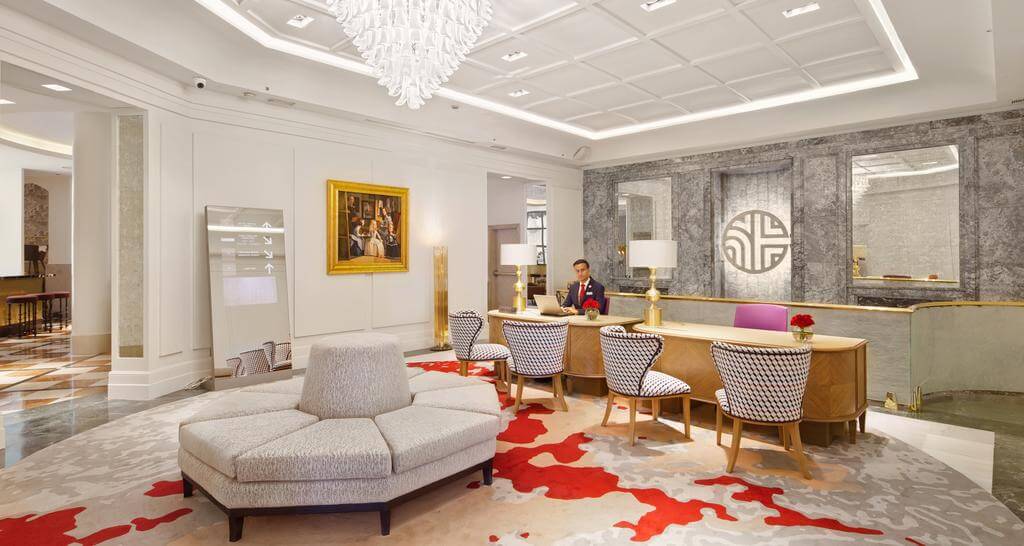Hotel NH Collection Madrid Paseo del Prado. Ceiling lamp by García Requejo. Source: Booking.com
There are a number of factors that we must take into account when facing the lighting project of a lobby or reception room of a business, such as a hotel. These spaces are different from other interiors in that they must convey a first impression of the brand that is behind it. From the first sensations that awaken in the senses of users as soon as they pass through the door of the hotel will depend, in large part, the positioning of the establishment in the mind of the client. This is why lighting, as well as decoration as a whole, plays a decisive role in this type of space.
1. The Purpose of the Room
The hall of a hotel does not have the same function as the waiting room of a dentist or the same as that of an office. The hotel lobby must be ready for the rest of the guests, who arrive tired after long hours travelling and want to feel at home. However, the dentist’s waiting room must transmit peace and confidence to patients who are nervous. Therefore, depending on the state we want to transmit to the user, we must choose the most suitable luminaires.
2. Decoration
The lighting should be integrated into the decoration that the interior designer has designed for the stay. The style of the furniture, the chosen colors, the fabrics … All this, together with the color of the light that we choose, must transmit a uniform and integrating ambient.
3. M2
The size and type of luminaires will depend on these. For a large room it may be necessary to have lamps made of light materials but powerful in light intensity, such as those manufactured with PMMA, for example. However, in smaller rooms it may be sufficient to place LED wall sconces.
4. Climatology
The behavior of the lamps over time will depend on the materials we select. And this will be conditioned by the type of climate in which the project is located. Materials such as less noble metals adequately resist in European climates if they are not exposed to the elements. However, they deteriorate rapidly in Caribbean climates.
5. Country and International Regulations
There are as many energy efficiency regulations as there are countries, in addition to community and international laws. Nowadays, the energy saving and the impact they cause on the environment are as important as the design and quality of the luminaires. This kind of regulations should be taken into account when designing the lighting project if we want to avoid subsequent sanctions.
Do you need advice with your lighting project? Consult us without obligation.


